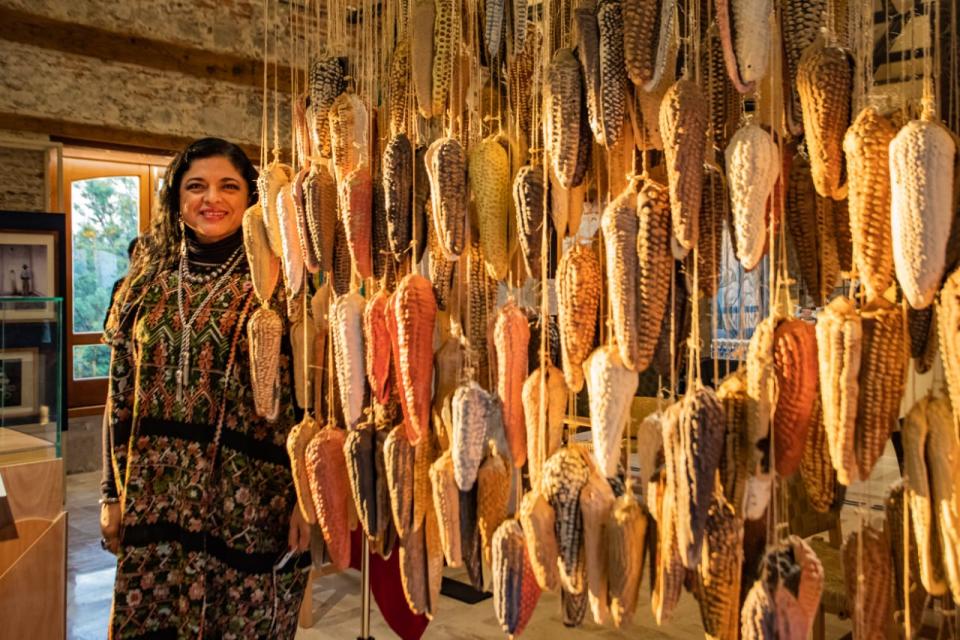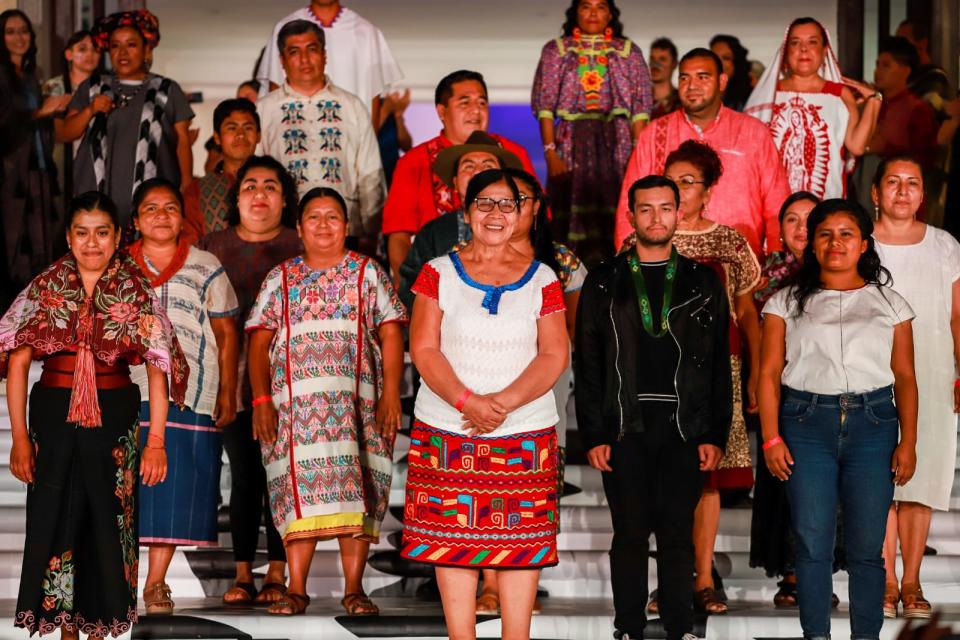Mexico Reimagines the Trade Show by Adding Artisans, Removing Cultural Appropriation
- Oops!Something went wrong.Please try again later.
- Oops!Something went wrong.Please try again later.

Designer, meet artisan: your key connection for ensuring cultural appreciation isn’t really cultural appropriation in a thinly veiled mask.
That was the main mission at Original last week, the first of what will become an annual event in Mexico that reimagines the trade show, where artisans, not sales reps, come to promote their creations and designers don’t just place orders — they engage in collaborations.
More from WWD
Held at the Complejo Cultural Los Pinos cultural center in Mexico City from Nov. 18 to 21, Original brought together more than 300 artisans from Indigenous communities around Mexico to exhibit their work, and invited domestic as well as international designers to connect and to ensure ethics are a part of cultural referencing in fashion.
More than a trade show, Mexico’s secretary of culture Alejandra Frausto Guerrero — who has made a name for herself in fashion by directly calling out designers like Isabel Marant and Louis Vuitton for using techniques and iconography from Mexican creators without credit — called the first iteration of Original “a national cultural movement.”

Courtesy Mexico Secretaria de Cultura
“For Mexico’s communities, each garment has a profound meaning and a complex crafting process. Thus, through Original, both worlds, which usually are separated, that of tradition and that of fashion, can connect with each other and speak as equals,” Frausto told WWD. “Original builds bridges and makes available the tools for the original creators, and they decide whether they take it or not.”
With both tradition (the artisans) and fashion (the designers) together under one roof, Original featured seven runways with new works from designers, artisans and brands that “collaborate ethically and fairly with designers and creative communities in Mexico” on display. As part of the curated catwalks, attendees were also able to view the work of 200 textile, accessory and shawl artisans from more than 30 of Mexico’s creative communities.
Forums were available for discussion and exchange of experiences, including debates on cultural appropriation. Lectures and workshops included training in subjects like copyright, forms for commercialization and techniques like the use of natural dyes. There was a business lounge for meetings between brands and artisans (translation services were available as needed), as well as an exhibition and sale hall where more than 500 pieces of textiles, accessories, art, ceramics and furniture from 150 artisans were available for purchase.

Courtesy Mexico Secretaria de Cultura
“Original has really transcendental spaces,” said Frausto, expressing pride over the debut fair. “Just as Mexico’s cultural heritage is diverse, Original’s audience is equally diverse, inclusive and multicolored, where all of us can weave together the immense canvas that is culture.”
Paty Govea, designer of the namesake slow fashion brand Patricia Govea, who attended the event, would agree.
“Artisans in Mexico are the soul and spirit, they have been suffering [from] segregation, racism and discrimination. I’m so happy and very touched to see artisans from all over the 68 ethnic groups reunited in one event which will impact their lives for the better,” she told WWD.
Govea considers her brand, which is available at Saks Fifth Avenue, “a social impact enterprise,” where each item in the collection of women’s fashion and accessories — from dresses to capes to totes — are made authentically by Indigenous artisans.
“For us, fusing the ancestral methods with haute couture goes beyond any industrial production. It is a righteous cause that allows us to thoroughly change the lives of the Wixárrikai communities,” the brand’s website reads.
“I think it is a great opportunity to have the platforms we need and invite all the designers who have been ‘inspired’ by our culture to make conscious [choices] about giving credit. Also, they have to ask for permission to promote a culture that doesn’t belong to them and give back to the communities which are lacking of basic needs,” Govea said of Original. “My mission is to give voice and better opportunities for the Wixárrikai communities, not just providing sustainable jobs, also integrate education programs and health services for them. They have a rich culture, with sacred symbols and a great history to tell, where every stitch represents their culture, every stitch represents their tradition and every stitch represents a family with hope for seeking a better world.”
With Original, Frausto also has hope for a better fashion world. One that’s more ethical, more apt to collaborate than take, and one where recognition of original creators isn’t a rare occurrence.
“The industry knows well that by taking a design, industrially reproducing and branding it does not pay homage, nor is it inspired by it in any manner,” she said. “Plagiarism isn’t paying homage. Theft is not inspiration. Modern pirates don’t even risk their lives weathering sea storms but take what they please and brand them like any other sort of merchandise. This will be a great achievement for the industry to understand that there are original creators who can speak face to face with the brands in order to build relationships under the rule of ethics and where the original creator obtains a fair economic retribution.”
Sign up for WWD's Newsletter. For the latest news, follow us on Twitter, Facebook, and Instagram.

